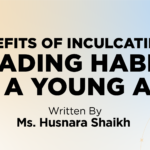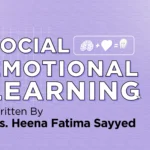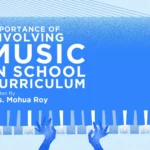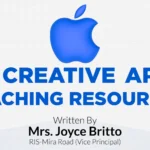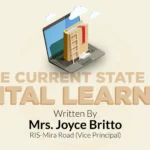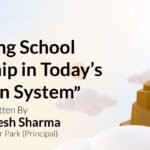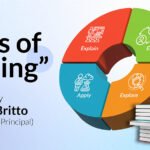New technologies are continuing to make their way into our classrooms. It is evident that this is transforming how we design the learning space, the role of technology, the role of the learners and also the other centrepiece of education, ‘educators’. My recent experience of online discussions shows that the changing role of the educator in technology-enhanced learning is becoming a very popular topic. What is interesting is that on many occasions educators are blamed for not adapting and incorporating technology into their teaching. What I haven’t seen is anyone talking about how the role of the educator has altered. In every single discussion, educators have talked about what needs to be done to support educators to use technology better in the classroom, but no one has discussed what has changed.
I think it is very appropriate to mention Dr Jessel’s point on this topic. Jessel (2012) suggests that “Innovation arising from new technologies makes a variety of demands upon the role of the educator”. He continues, “At another level, the introduction of innovation makes major demands upon educators’ pedagogical, professional and managerial skills.” What this tells us is that by using only the traditional teaching will not help educators to integrate technology into their teaching. As the new technologies constantly evolve, maybe the focus has been too long on the technology, rather than training educators to learn to evaluate each medium in terms of what can be achieved in practice and which strategies need to be adopted. Some of strategies which have been adopted by the educator in the classroom.
WAYS TO INCORPORATE TECHNOLOGY IN THE ELEMENTARY CLASSROOM
For younger learners, technology has been used to build fundamental skills to prepare them for future independent learning. Learners have used interactive games to reinforce math, spelling, phonetic, and reading skills. Sites like Spelling Training permit learners or educators to upload their own word lists to practice word pronunciation and creative interactive games. Parents can also use these sites to exercise fundamental skills beyond the walls of the classroom.
USING TECHNOLOGY IN THE MIDDLE SCHOOL CLASSROOM
As learners begin to take steps to transform into independent thinkers, they have use technology to develop basic life skills. Learners at the middle school level gain independence by having different educators for each subject. Using technology to acquire skills such as conducting research has been applied to any content area. Websites like EASY Bib guide learners to find credible sources through a variety of search engines and teach learners to correctly cite those sources to avoid plagiarism.
TECHNOLOGY IN HIGH SCHOOL CLASSROOMS
Learners, who reached their secondary education, have discovered ways to use technology that can be beneficial for college and career development.
Familiarization with Microsoft Office and Google Drive teach learners to make spreadsheets, slide show presentations, and share documents where they can receive fluid feedback on their work. Many careers use these elements of Microsoft and Google to organise information and collaborate between colleagues or clients.
Educators often find success when they present the opportunity to use technology in the classroom. There are various benefits and effects when technology is used for educational instruction and some may argue that not all of the effects are positive. Having an infinite flow of information and entertainment available at any given time could be seen as a distraction, but if the technology is integrated into the classroom with routines in place that are monitored or assessed, the pros of using technology in the classroom outweigh the cons.
Today, it is evident that both activities that lead to learning by actual application and experiencing in instructional processes and learning processes associated with real-life situations can be organized effectively with the support of instructional technologies. In this respect, it is seen that these principles in the learning process mentioned and the reflections of instructional technologies onto educational environments are in interaction. The reason is that instructional technologies provoke interests and stimulate learning; that they encourage students to study; that they help connect the new information with the old knowledge; that they associate the lesson subject with the real-life experiences of the student; that they allow students to reach and evaluate the necessary information; that they meet the expectations and needs of the society; that they help students describe the world in the way they observe; that they help summarize the information to facilitate comprehension; and that they increase individual learning.
In our country, the first thing that instructional activities remind us of is the school and especially the class environment. Therefore, the use of instructional technologies in-class environment is important. However, the dynamics of the class environment should be taken into consideration regarding the use of these technologies. Technology-based multimedia applications in class environments include student-teacher, student-student, student-content and student-environment interactions in the learning process. Within the framework of these interactions, it is expected that multimedia tools should develop classrooms in terms of education; that access to network sources, especially in smart classrooms, should increase the student-content interaction and thus the meaningful and in-depth learning potential; and that use of theatrical and multimedia presentation techniques should increase the student-teacher interaction
Integrating technology into the school curricula generally work on comprehensive plans for technology use. Rather than acting just like a road map, these plans explain the philosophy of technology use as well as the way of developing teaching-learning activities.
In the modern information era, the wealth of the world’s information can be accessed through a variety of devices. Technology that was once expensive and limited to only the privileged few have now advanced and become far cheaper. Students have grown up with technology all around them and teachers must adapt to this new lifestyle. Teachers adapting to this new lifestyle must find methods of incorporating and utilizing these new forms of technology in class, not only in a motivational level but also on an instructional level too. This can be done in many different ways, from a ground-up pedagogical method to the use of accommodations on an Individual Education Plan (IEP) plan. Students who find themselves supported and taught in a method of which they are used to will be more motivated to learn and feel included. In today’s emerging technological society, it stands to reason that the modern-day the classroom should reflect what is seen in society. By showing real-world technological applications, intrinsic value can be brought to the learning process, increasing interest and motivation.
It is also important for these classrooms to address the need of all students. Technology supports the need for divergent learning approaches, helping to create a sense of community as well as a meaningful experience. Appropriate use of technology can serve regular education classroom by motivating students in all disciplines, such as math, social studies, and literacy. Students who have identified learning disabilities can be served by the appropriate integration of technology through assistive technology devices, allowing students to access the information and maintain the pace with a regular education classroom.
By integrating technology into classrooms, teachers will be able to motivate and include the entire spectrum of students (from learning disabled to gifted and talented).
Therefore, I think it is time to have a rational and constructive approach towards the use of appropriate technology in classrooms, which can serve as a teaching, learning tool in an effective manner.
Mr Mukesh Sharma: Mr Mukesh Sharma is the Principal of RIS Patankar Park. He has been in the field of education since the past 30 years. He has his expertise set in academics and administration. His working profile has included his service in all curriculums – CBSE and State Board. Winning many accolades, he has received a commendation from the Minister of Education (then Ministry of Human Resource Development), Government of India’s office for the commendable academic performance of students at Board exams. He has also worked in different capacities i.e as an Inspection Committee member for Affiliation unit, Centre Superintendent for conducting JEE Mains and NEET by NTA.


